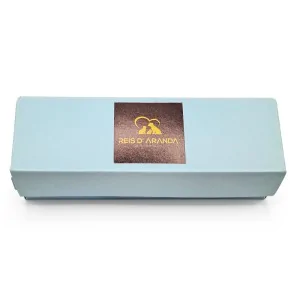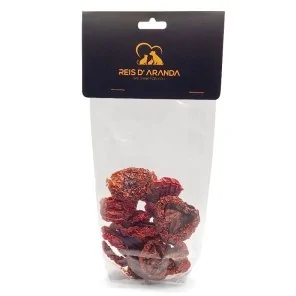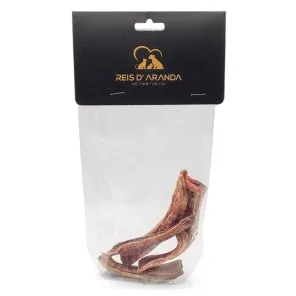Its name says it all: the Vienna blue rabbit comes from Austria. Not only is it beautiful with its shiny blue-grey...
THE SILVER CHAMPAGNE RABBIT
INTRODUCTION
The Champagne Silver Rabbit is very special because of the silver colour of its fur, which at the moment of birth has a different coloured fur and then turns silver, which attracts the attention of the buyers at first sight.
THE ORIGIN OF THE SILVER CHAMPAGNE RABBIT
The Champagne silver rabbit has a very ancient origin. As early as the 17th century, the existence of rabbits with silver fur was already mentioned. This silver colour is often associated with the rich rabbit, a very old breed which seems to be the origin of the Champagne Silver. In fact, it is likely that the selection of this rabbit led to the development of this breed and the Champagne Silver rabbit. This is interesting because of the different shades of fur it can adopt.
The French term for the Champagne Silver appeared for the first time in a text on rural economics in the 18th century, and the breed was significantly consolidated in the second half of the 19th century. Its breeding developed in the Troyes region. The numerous tanneries established in this region allowed the breeders to trade the skins and meat. At the time, the skins were particularly sought after for their colour and were part of a very productive market.
In addition, the breed was closely linked to the market for fur skins. For this reason, around 1870, the fall in prices due to incessant overproduction led to a decline in the number of breeders, before a new boom began in 1895 and at the beginning of the 20th century. The breed was officially recognised in France in 1900.
Breeding declined sharply in the second half of the 20th century, hampered by the intensive production methods that were widely developed. The Champagne Silver rabbits are not suitable for this type of production, as their legs are not sufficiently resistant to their weight, which exposes them to various ailments if they are kept in cages. However, their many qualities have led hybrid producers to use them in certain genetic programmes.
There are an estimated 3,000 breeding stock on 490 farms, which is promising for the future of the breed.
WHAT IS CHAMPAGNE SILVERING LIKE?
TYPE, SHAPE AND CONSTRUCTION OF THE BODY: The body is solid and harmoniously rounded. The musculature is compact and well developed. The head is broad and well developed. The frontal profile is slightly convex. The dorsal line is ascending from the neck to the well arched loin, ending in a well rounded croup. The chest is well developed. The shoulders are muscular and close fitting to the body. The ears are strong and of a length of 13.00 to 14.5 cm. The legs are of medium length and strong. A small well formed dewlap is permitted in bitches.
- SERIOUS FAULTS: Length of ear below 12.0 cm above 15.5 cm.
2. WEIGHT:
- NORMAL WEIGHT: 4.50 kg.
- MINIMUM WEIGHT: 4.00 kg.
- MAXIMUM WEIGHT: 5.50 kg.
3. COAT : The coat is dense, with good uniformity. The ears are well furred.
4. SILVER: Blue-white silver with black hair tips, the silver edges are evenly distributed over the colour of the body giving the old silver shade.
- Slight faults: Weak or irregular silvering.
- SERIOUS FAULTS: Absence of edges, total absence of silvering.
5. UNIFORMITY: Silver is evenly distributed over the whole body. Darker ears, eye rings, muzzle, legs and tail are not desirable.
- MILD FAULTS: Colour of body, ears and eye rings slightly light or slightly dark.
- SERIOUS FAULTS: Colour of body, head and ears excessively light or dark.
6. UNDER COLOUR: The under colour is dark blue to the base of the coat.
- Slight faults: Slightly pale colour.
- SERIOUS FAULTS: Total absence of undercolour. Undercolour clearly intermingled.
7. PRESENTATION: See general information
- Slight faults: Slight dirt on the feet, moult marks and slightly long nails.
- SERIOUS FAULTS: Very long and/or twisted nails, very dirty feet or body, urine rust on coat, footpad dermatitis, parasites of any kind, obesity or anorexia. Any signs of mistreatment, neglect or disease.
APTITUDES OF CHAMPAGNE SILVERING
In the past, the Champagne Silver was bred for its coat, the silver colour of which was highly prized. It is no longer bred for this purpose and is now intended for meat production. It is well suited for this purpose, with a carcass yield (percentage of the live animal's weight that becomes usable meat after slaughter) of up to 62 % and quality meat. For meat production, rabbits are used with weights ranging from 4 to 5 kg, with good muscle development in the body. For fur production, rabbits with elongated bodies and robust, rounded heads are used.
Although they do not have the growth of the giant breeds, they compensate with a high reproduction rate (on average 8 offspring per litter, often one dead at birth).
Rabbits can breed from the age of seven to eight months. It is a docile breed, which can also be bred as a companion animal.
The Champagne Silver has been part of a rather rigorous selection since its beginnings, especially with regard to its colour. At the end of the 19th century, the aim of the selection was to obtain specimens with a homogeneous silver colour and without spots, a common defect at that time. The aim was to obtain skins that were as close as possible to the demands of tanners and to sell them at a good price.
The embryos and semen of the Champagne silverside are kept frozen, as part of a conservation programme carried out by INRA and the French Rabbit Breeding Federation within the framework of the RESGEN genetic resource conservation project.
WHAT IS THE SILVER CHAMPAGNE RABBIT LIKE AS A PET?
They are generally docile creatures that make excellent pets. They prefer quiet environments, so households with rambunctious children are not a good choice. They are an ideal companion for older children, seniors, singles or couples who like peace and quiet.
You should begin socialising and training your Champagne d'Argent immediately after adoption. They have a naturally friendly temperament, but early exposure to people and other animals strengthens this trait.
CONCLUSION
The Champagne d'Argent rabbit is a silver rabbit that makes a great pet. With early socialisation, he generally gets along well with people and other animals. However, it is not recommended to house rabbits with dogs with a strong hunting instinct, such as a Beagle. They can be housed indoors or outdoors as long as they have an enclosure safe from predators and receive at least 4 hours of exercise each day.
Leave a comment
Log in to post comments
















